It's actually a bit difficult to calculate the values required for an R-C snubber without knowing something about the amount of energy that needs to be absorbed, which is related to the load current and the load inductance. Often one or both of these values must be guessed, because hard data is not available.
The idea of a snubber is that the capacitor absorbs the inductive energy stored in the load at the moment the switch (photomos) opens, and its value must be large enough so that the voltage across it does not exceed the rating of the switch.
The resistor is there partly for damping and partly to make sure that the capacitor doesn't discharge instantly through the switch the next time it closes. Its resistance value and its power rating must be deduced from the worst-case conditions for both scenarios. The power rating is also related to how frequently the switch is going to be operating.
Note that at the instant the switch opens, the capacitor is discharged and the load current is driven through the resistor, so its value must be low enough so that the IR drop does not exceed the rating of the switch, too.
So, taking what we know about your contactor and your SSR and making a few assumptions along the way, we can come up with some preliminary values.
The steady-state current of your contactor is specified as 5.25 VA, which at 24 V means that the current is
$$\frac{5.25 VA}{24 VAC} = 220 mA (RMS) = 310 mA (peak)$$
Your switch can handle about 60 V. Let's allow a little margin, so we'll design for 50 V. Therefore, if we want to keep the initial voltage across the switch to this level, we need a resistor no larger than:
$$\frac{50 V}{310 mA} = 160 \Omega$$
Let's assume that a medium-sized contactor coil has an inductance of about 1 H. This means that at the peak value of current, it is storing
$$0.5 \cdot 1 H \cdot 310 mA^2 = 48 mJ$$
of energy. Again, we want to limit the voltage across the switch to 50V, so the capacitor must be able to store this energy without exceeding that value:
$$\frac{2 \cdot 48 mJ}{50 V^2} = 40 \mu F$$
Note that this needs to be a nonpolarized capacitor!
Every time the switch cycles, you're dumping 48 mJ of energy into the resistor. If this is happening rarely (e.g., less than once a second), then a 0.5 W resistor will be more than sufficient. However, if it happens a lot more often, a bigger resistor might be called for. For example, 10×/second would represent a power dissipation of 480 mW, which would call for a 1W or larger resistor for robustness.
